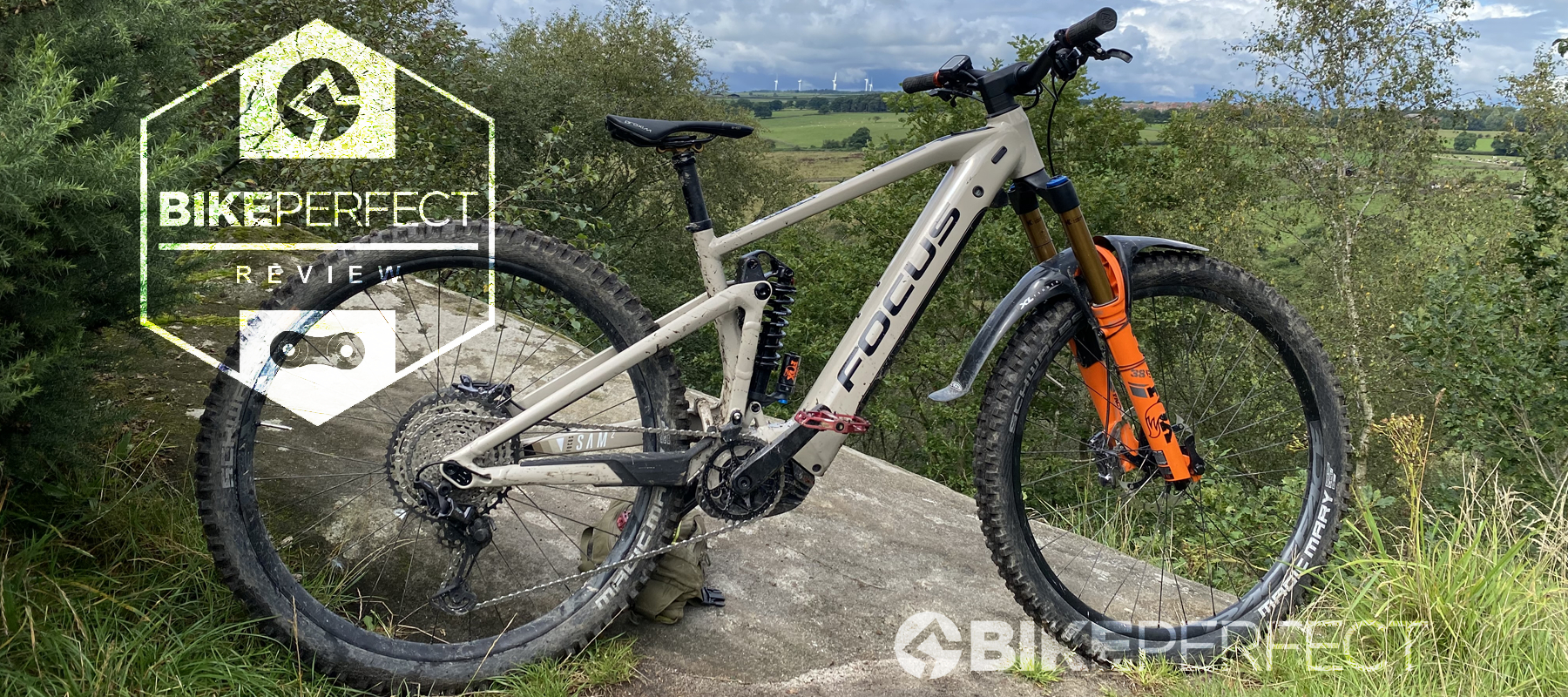Bike Perfect Verdict
The flagship ‘designed for down’ Focus Sam2 gets the suspension, stiffness and tires to tackle the sickest terrain head-on. Handling and harshness can make it hard work though, and there are design and spec flaws that mean it rides better as a mullet bike rather than a twin 29er.
Pros
- +
Top-quality fork and dropper post
- +
Seamless, sag-centric coil shock suspension
- +
Neutral yet stable FOLD kinematic
- +
Seriously stiff, DH rated frame
- +
Powerful, proven Bosch motor
- +
Large capacity battery
- +
Super tough, high-grip tires
- +
Mixed-wheel compatible
- +
Conventional bottle mount
- +
Clean cable routing
- +
Generous mud room
Cons
- -
Stiffness, weight and handling accelerate fatigue
- -
Handles better with a 27.5in rear wheel
- -
Eats battery and/or legs quickly
- -
Unprotected motor
- -
Battery rattle
- -
Loose ‘Drifter’ axle chip
- -
Control lines routed through headset bearing
Why trust BikePerfect
The 6.9 is the flagship of the three-bike Focus Sam2 range, complete with a top-spec Fox Factory fork and coil-shock rear to make the most of the 170mm of travel. Smoothly neutral FOLD suspension and heavy-duty Schwalbe rubber make Focus' best e-MTB an unshakeable tank in terms of impact handling, but chaos-crushing weight works against agility, while serious stiffness in the frame and bar can take a toll on longer, rougher days. Some of the neat features also introduce flaws as well.
Design and geometry
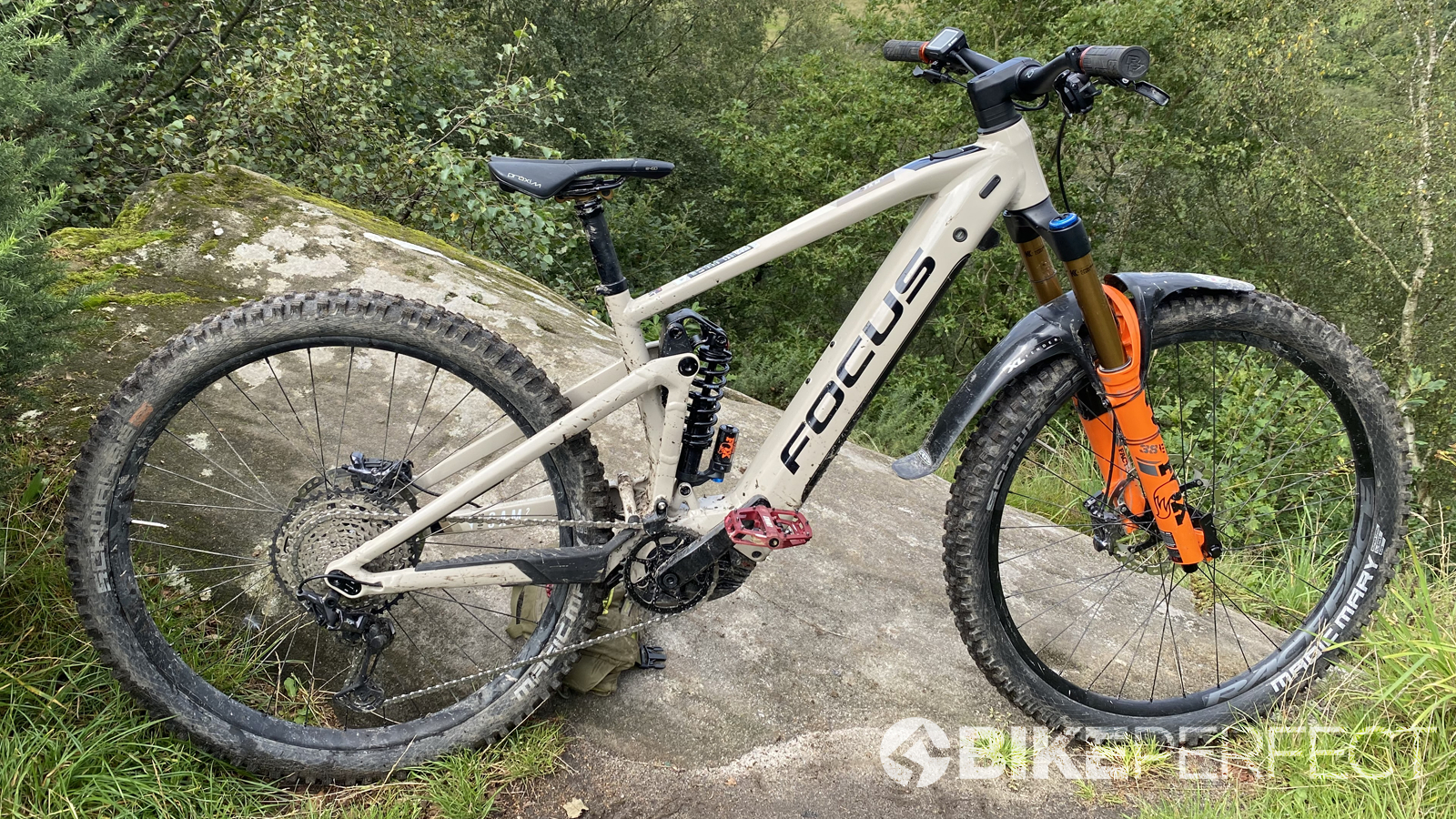
All the Sam2 bikes use the same 7005 hydroformed, Category 5 DH-rated frame with 1.5in headtube and oversized open belly downtube for the lockable and removable 625Wh battery. The back end is a single-piece swingarm that pivots level and central with the top of the chainring, but it’s actually made from multiple sections of tube and hollow-backed, forged junction sections.
The two-piece 'FOLD' linkage joins the swingarm and mainframe at the top corner for maximum triangulation and stiffness. The second linkage then rolls over the top to drive the shock vertically down onto a bridge mount on the motor housing. This leaves plenty of room for a conventionally positioned water bottle and a tube/tool wrap within the frame. The charging port sits on the shallow top tube behind the stem to keep it well away from mud, and easy to access if you’re recharging in situ. While the cables and hoses are supplied routed through the stem into the frame, you still get bolted cable entry blanks for the frame in case you get sick of the internal servicing complications. The Bosch Performance Line CX motor sits exposed at the base of the bike with just some flimsy cosmetic plastic plates on the lower sides which means the cooling is as good as it can be, but invites front wheel spray and potential flying rock damage. The rubber chain slap guide on our sample was peeling off alongside the chain too, but the small chain guide slides down for security.
The asymmetric chainstays end at the flippable rear axle ‘Drifter’ chips which let you run a high 451mm rear center length with plenty of mud space even around the 29x2.6in tires, or a 430mm length with essentially the same geometry if you fit a 27.5in rear-wheel and tire.
Alternatively, you can run a 27.5in without flipping the ‘Drifter’ chip which slackens the head angle out from 65 degrees to 64.1, and lowers the bottom bracket too. Otherwise, standard geometry gives a 76-degree seat angle with a 345mm bottom bracket height and 450mm reach on the medium bike we rode. Relatively short seat tubes mean you can easily size up to get a longer reach with the large coming in at 480mm with a 450mm seat tube, and the XL at 510mm reach with a 490mm seat tube.
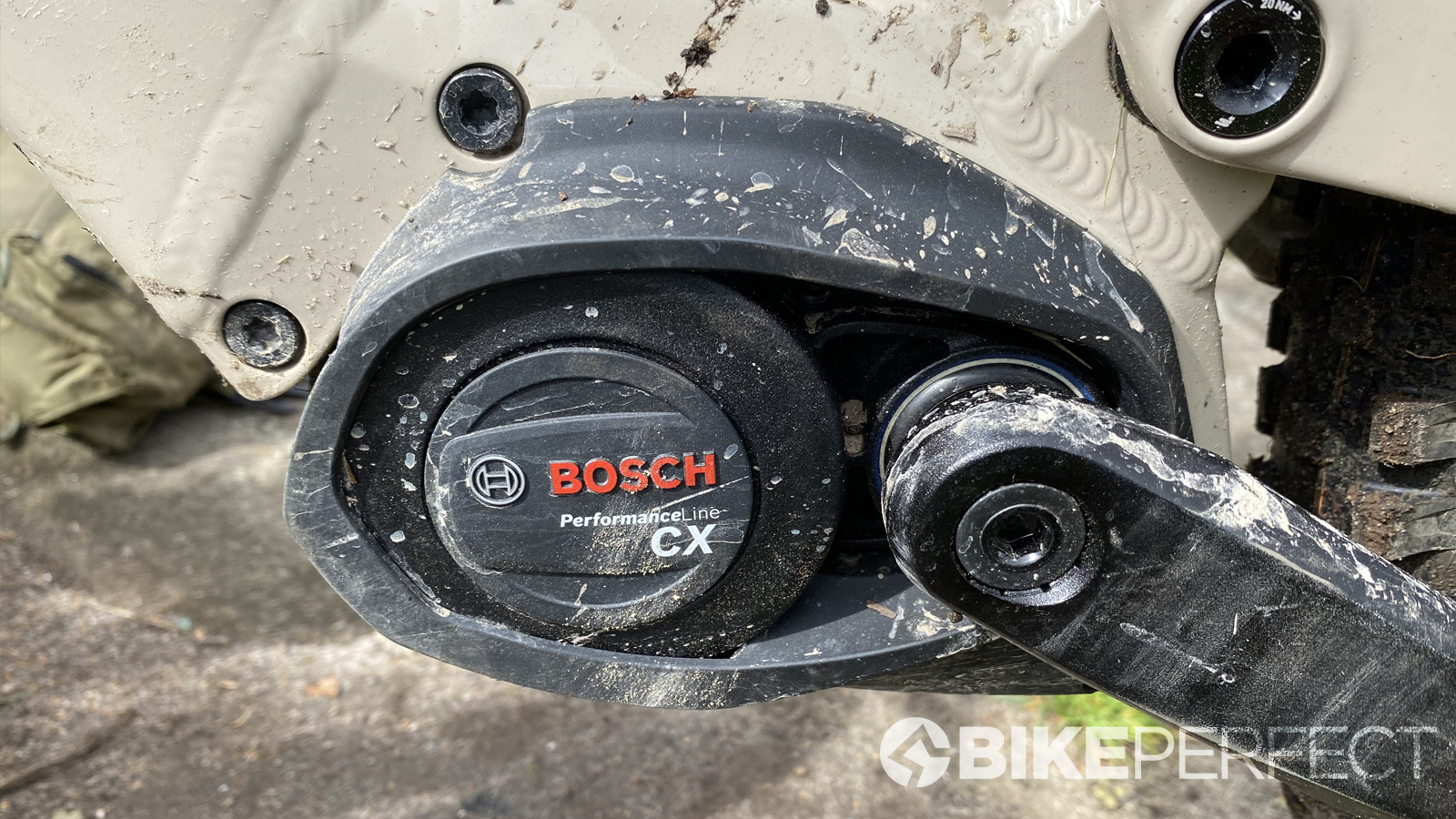
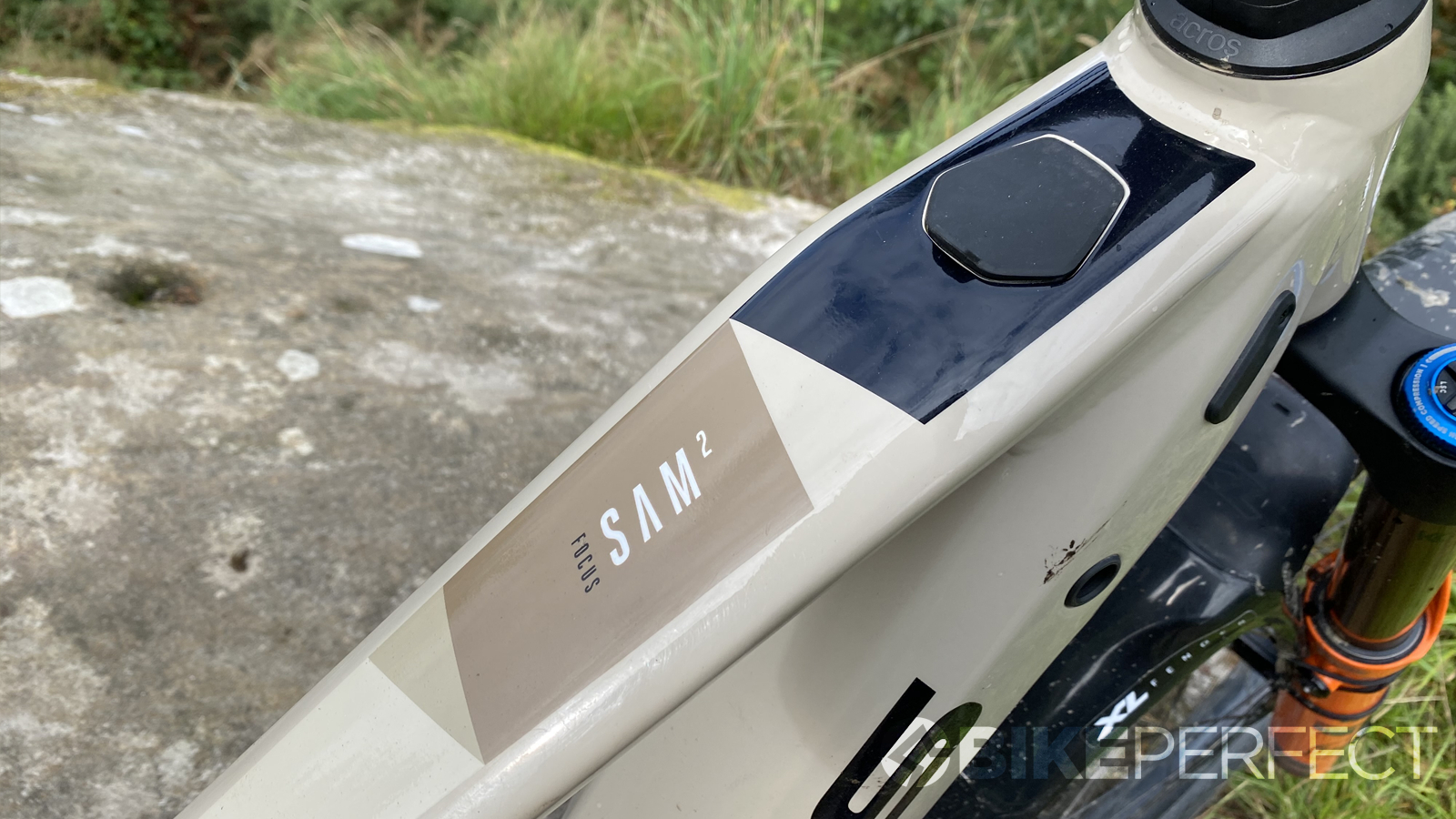
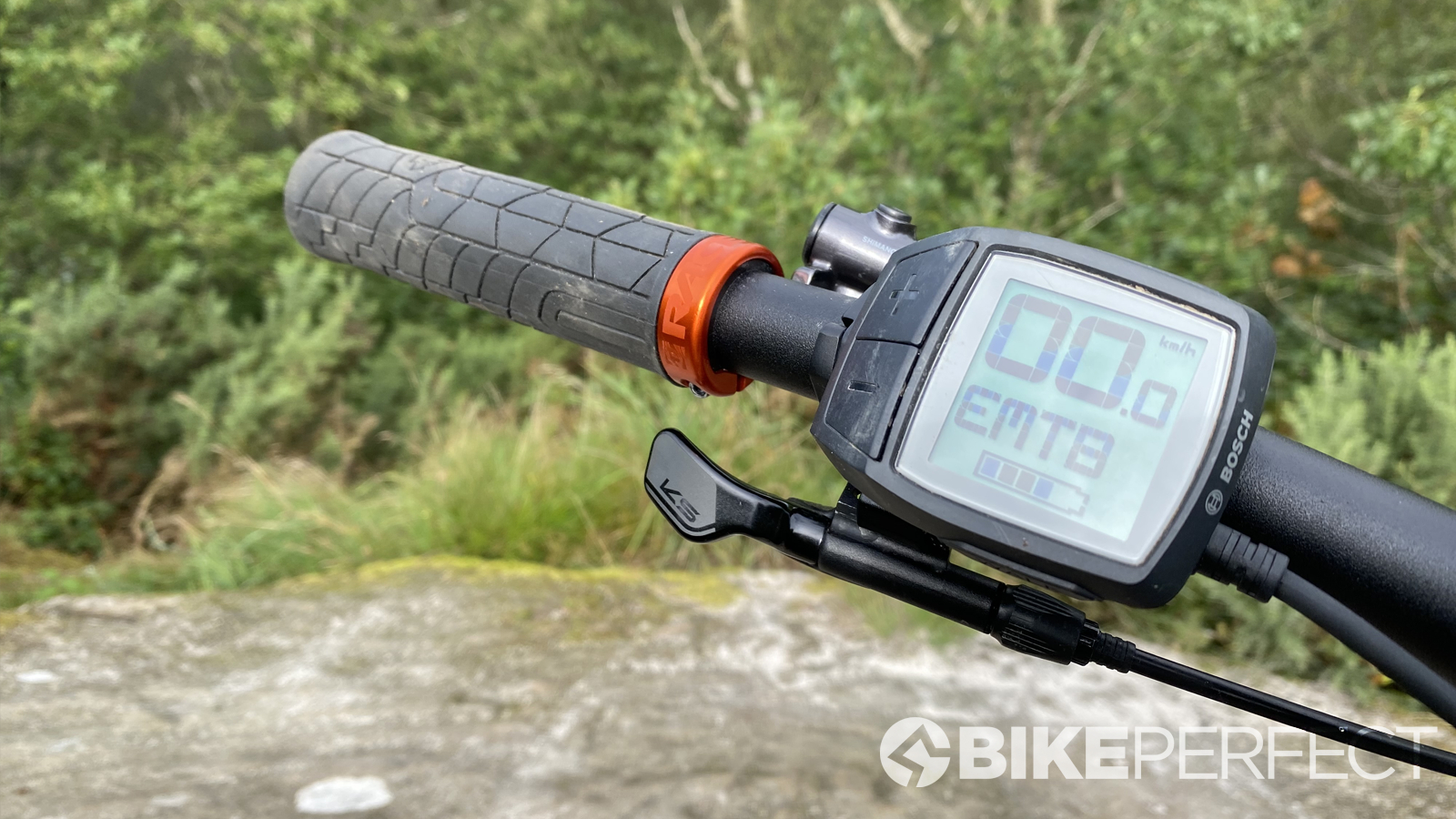
The Bosch Performance Line CX motor sits exposed at the base of the bike with just some flimsy cosmetic plastic plates on the lower sides which means the cooling is as good as it can be, but invites front wheel spray and potential flying rock damage. The rubber chain slap guide on our sample was peeling off alongside the chain too, but the small chain guide slides down for security.
The asymmetric chainstays end at the flippable rear axle ‘Drifter’ chips which let you run a high 451mm rear center length with plenty of mud space even around the 29x2.6in tires, or a 430mm length with essentially the same geometry if you fit a 27.5in rear-wheel and tire.
Alternatively, you can run a 27.5in without flipping the ‘Drifter’ chip which slackens the head angle out from 65 degrees to 64.1, and lowers the bottom bracket too. Otherwise, standard geometry gives a 76-degree seat angle with a 345mm bottom bracket height and 450mm reach on the medium bike we rode. Relatively short seat tubes mean you can easily size up to get a longer reach with the large coming in at 480mm with a 450mm seat tube, and the XL at 510mm reach with a 490mm seat tube.
Components and build
The headline componentry on the 6.9 is the top of the range Fox 38 Factory Grip 2 fork. This gives high- and low-speed compression and rebound tuning plus all the latest pressure equalization smarts in a super stiff, oversized leg chassis with floating 15QR axle alignment. The 6.9 is the only Sam2 to get a coil rear shock too, with Fox’s super well-proven Van Performance delivering a 65mm stroke with low-speed compression and rebound adjust. Fox also provides the Transfer Factory dropper post although that’s teamed with a KS bar lever due to supply issues.
Brakes are Shimano XT four-pot discs with 203mm rotors, using a custom offset rear bracket to bridge over the Bosch wheel sensor. The rear mech and shifter are XT too, although Focus sneaks an SLX cassette and chain into the mix. The chainset is also a slim-armed Samox unit with a relatively large 34T chainring, which seems more cross-country than extreme in character.
Tires are Schwalbe’s legendary Magic Mary Addix Soft compound in 29x2.6in with a Super Trail carcass at the front and the heavier Super Gravity at the rear. Rims are standard Race Face AR30 Offset (rather than Heavy Duty ARC HD Offset) laced onto Novatec hubs, but at least you get 32 spokes to spread the stress. Race Face also supplies the basic-but-stiff and well-shaped Chester gravity bar. The 50mm stem is Focus’ custom CIS unit with a slotted faceplate to route the gear and brake lines internally over the top of the bar and then down through the stem, headset spacers and bearings into the frame. The head unit for the Bosch motor is the basic and bulky Purion unit. The result is an all-up weight of 26.4kg (58.2lb) for our medium sample without pedals.
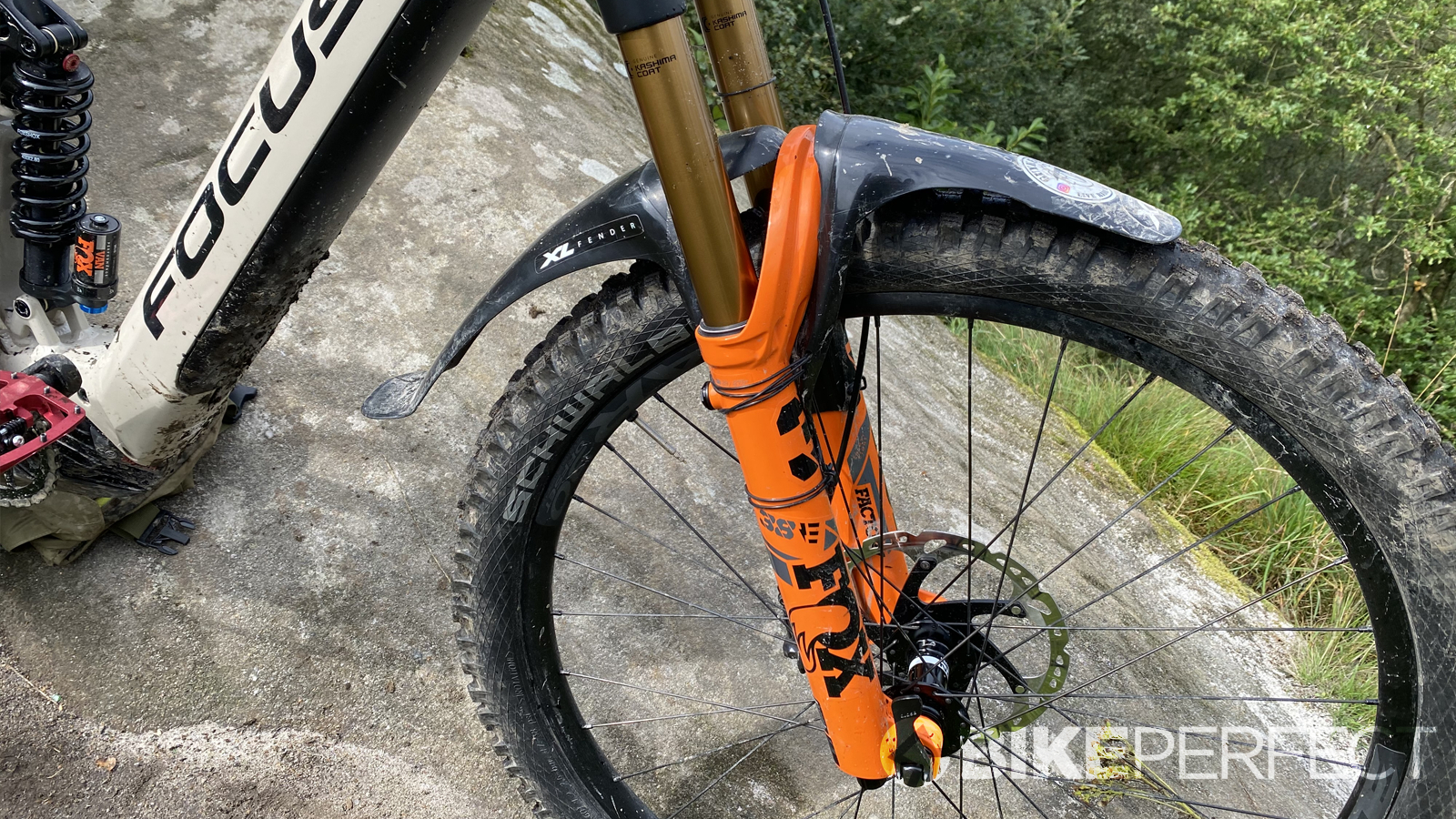
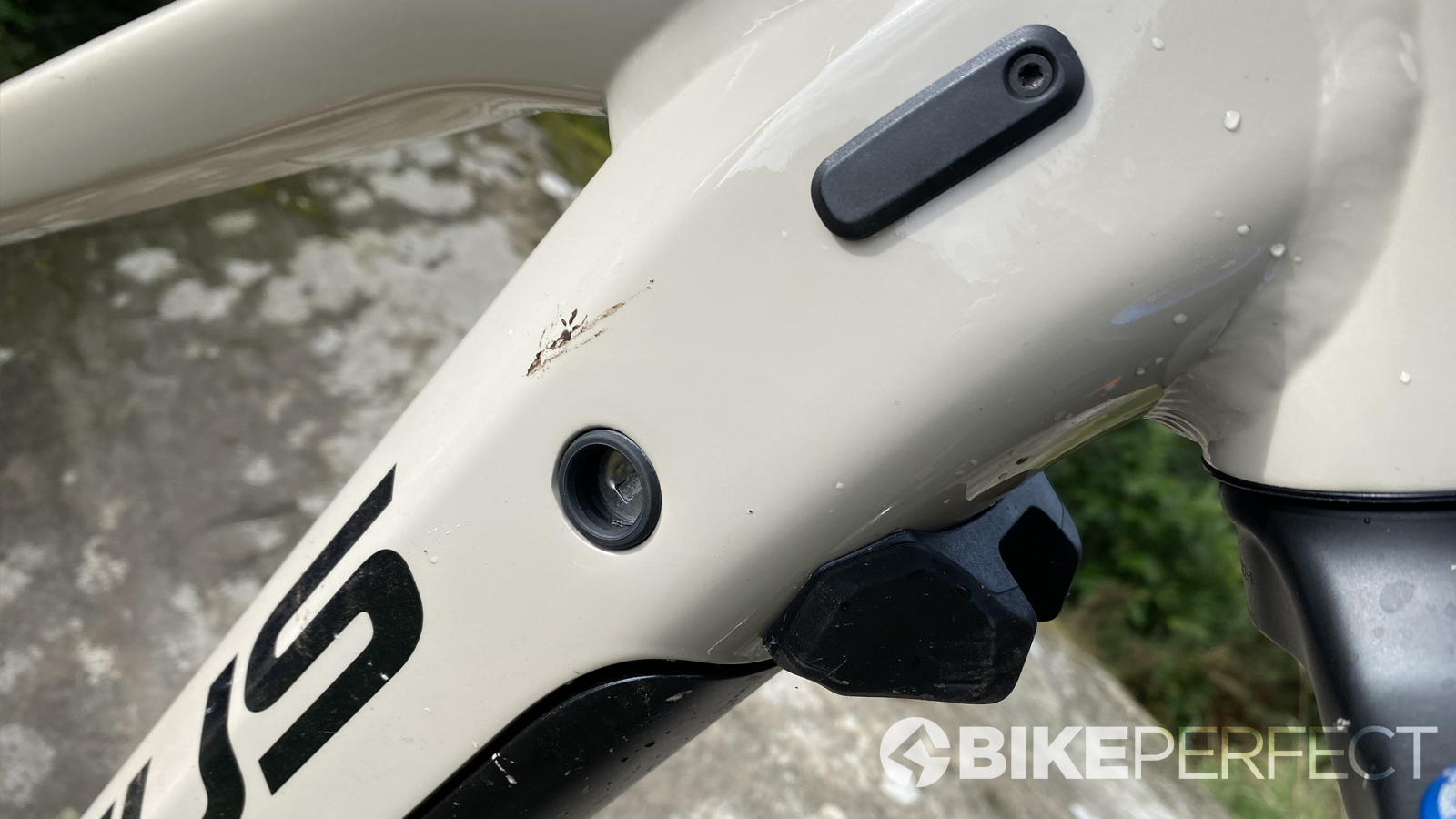
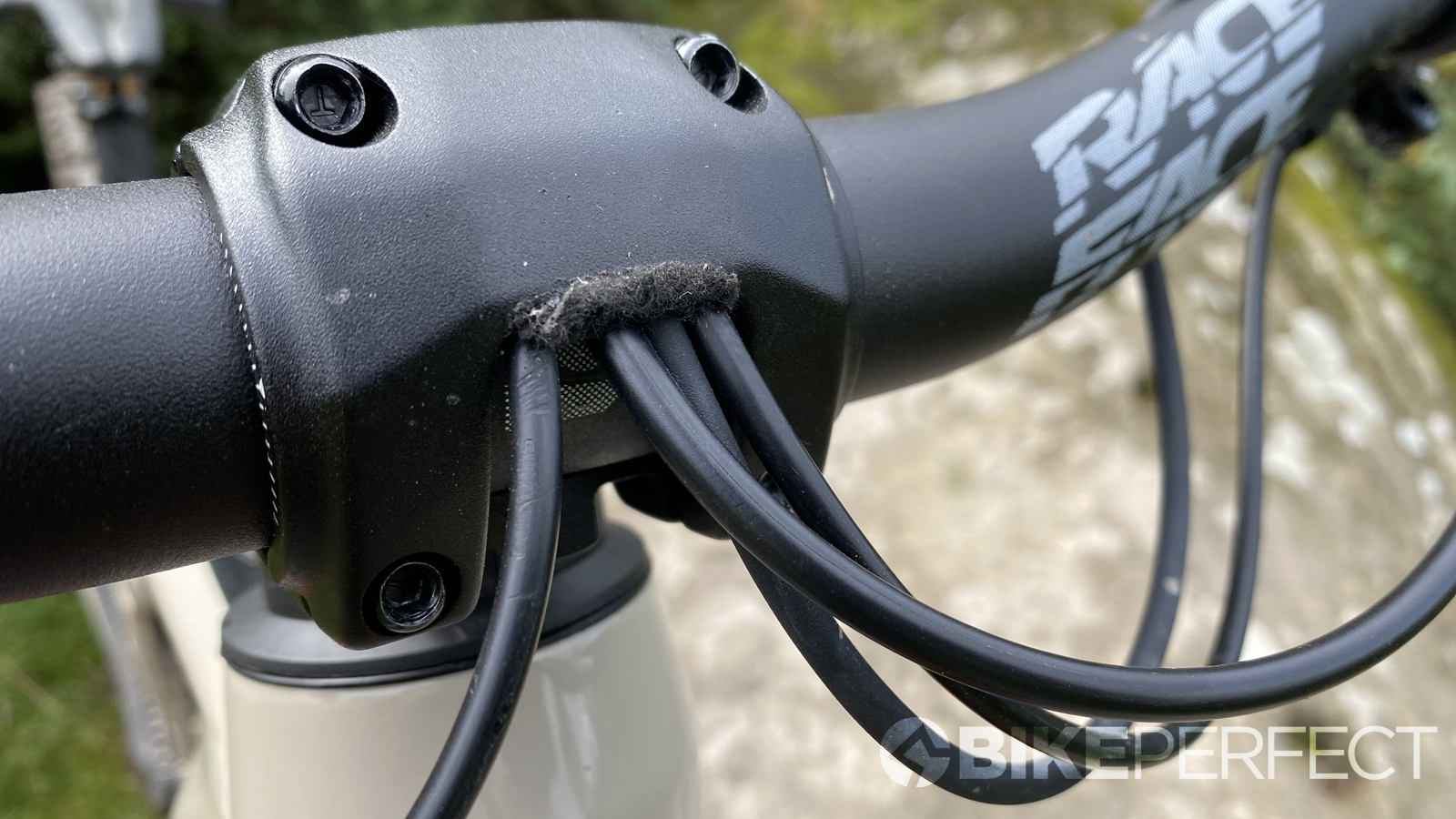
Ride, handling and performance
Unsurprisingly that weight has a noticeable effect on the ride, particularly as there’s been no attempt to lower the battery mass and the 345mm bottom bracket height is relatively high. The 65-degree head angle and 50mm stem means it doesn’t have the sense of insolent swagger or excess leverage when you’re trying to flick and flop the Sam2 from corner to corner either.
The FOLD suspension is also configured to switch from a digressive to significantly progressive rate at the 30 per cent sag point too, which centers the bike in the mid-stroke rather than sinking it low. That’s a good thing in terms of predictable cornering support, and once you’ve got used to getting your knees properly involved, wrestling the bars a bit harder and maybe blipping the brakes to trip it into the turn ‘Scandi Flick’ style it will carve a high G corner with serious authority.
The big, healthily spaced blocks and soft compound of the Magic Mary tires mean it’s happy to carve, brake and drive hard whatever the conditions too. The heavily reinforced carcasses also mean you can drop pressure - particularly on the Super Gravity rear - without worrying about squirm or fold, but there is a balance to be struck. Too low and you’re denting the Race Face rims, along with the brand's reputation. Too high and the stiff and sturdy tire carcasses noticeably slap and slam rather than cushion and conform.
Thankfully - unlike most coil bikes we test - the rear shock is refreshingly lightly sprung and the 400lb coil on our medium was spot-on for a 70kg rider with gear on. Even though the shock is conventionally mounted - rather than trunnion-mounted with side bearings - the reduced seal drag of the coil combines with the digressive start and high sprung to unsprung weight ratio to give a very fluid small bump and rock/root response. The leverage curve also maximizes consistent ground connection on either side of the sag point so it tracks and grips under power with surprisingly little bob if you spin smoothly. As you’d hope from a coil and piggyback damper controlled 170mm stroke, serious slams and slaps are sucked up with impressive poise for as long as you can hang on and the harder and bigger things get the more you’ll be a fan of the Van. The neutral pivot point means that there’s no noticeable pullback through the pedals either, so your legs don’t feel wiped after a long descent.
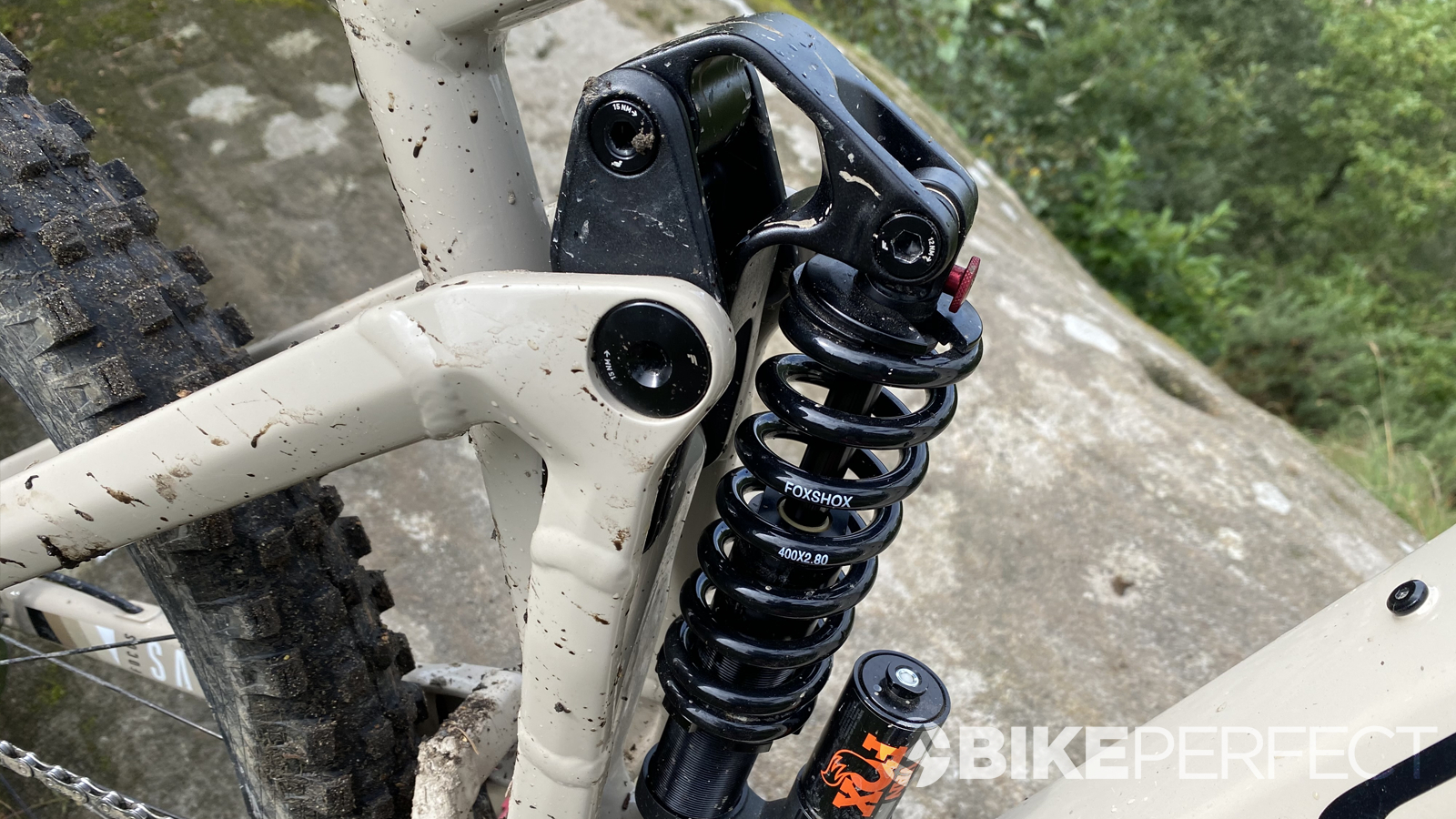
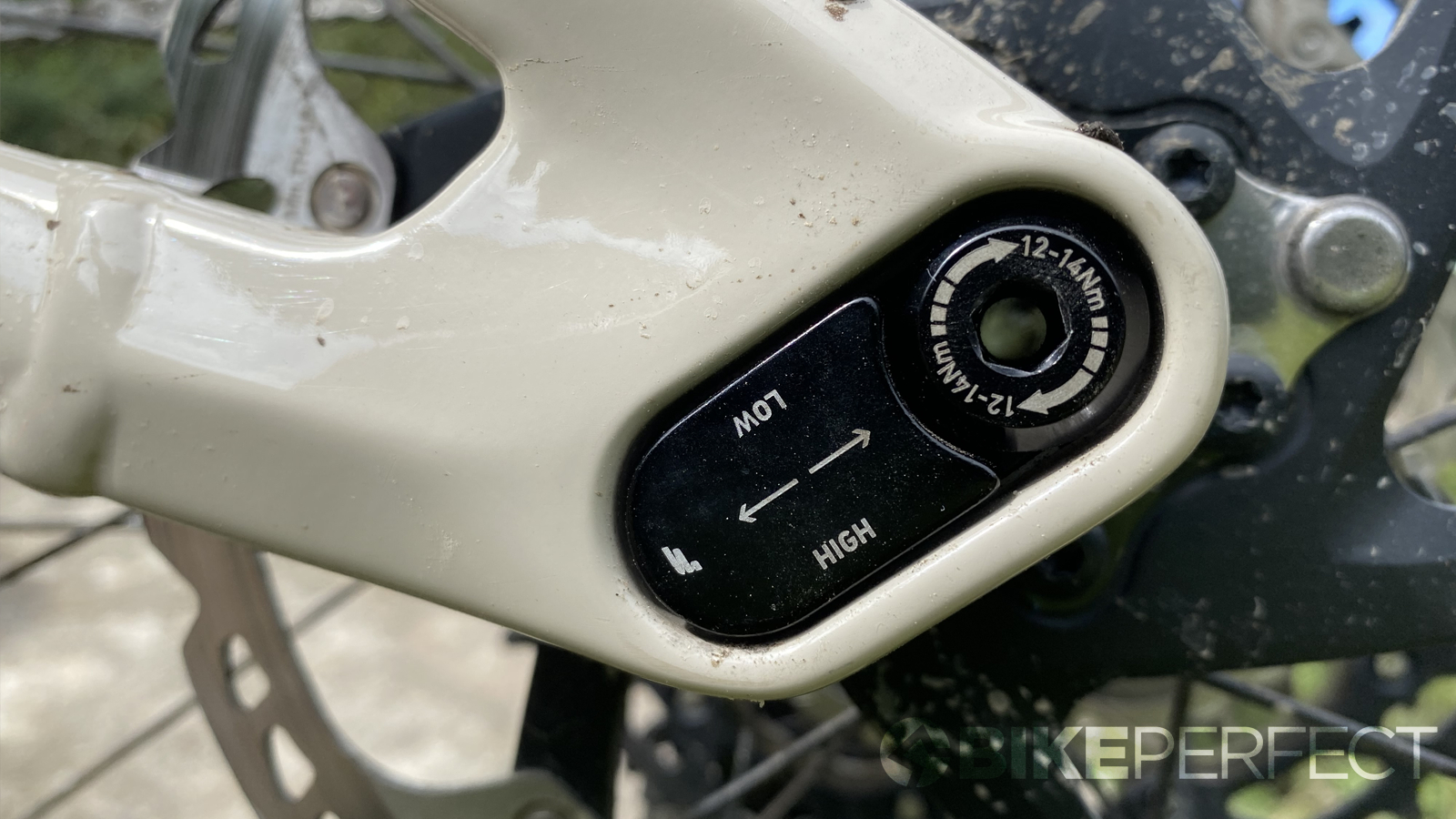
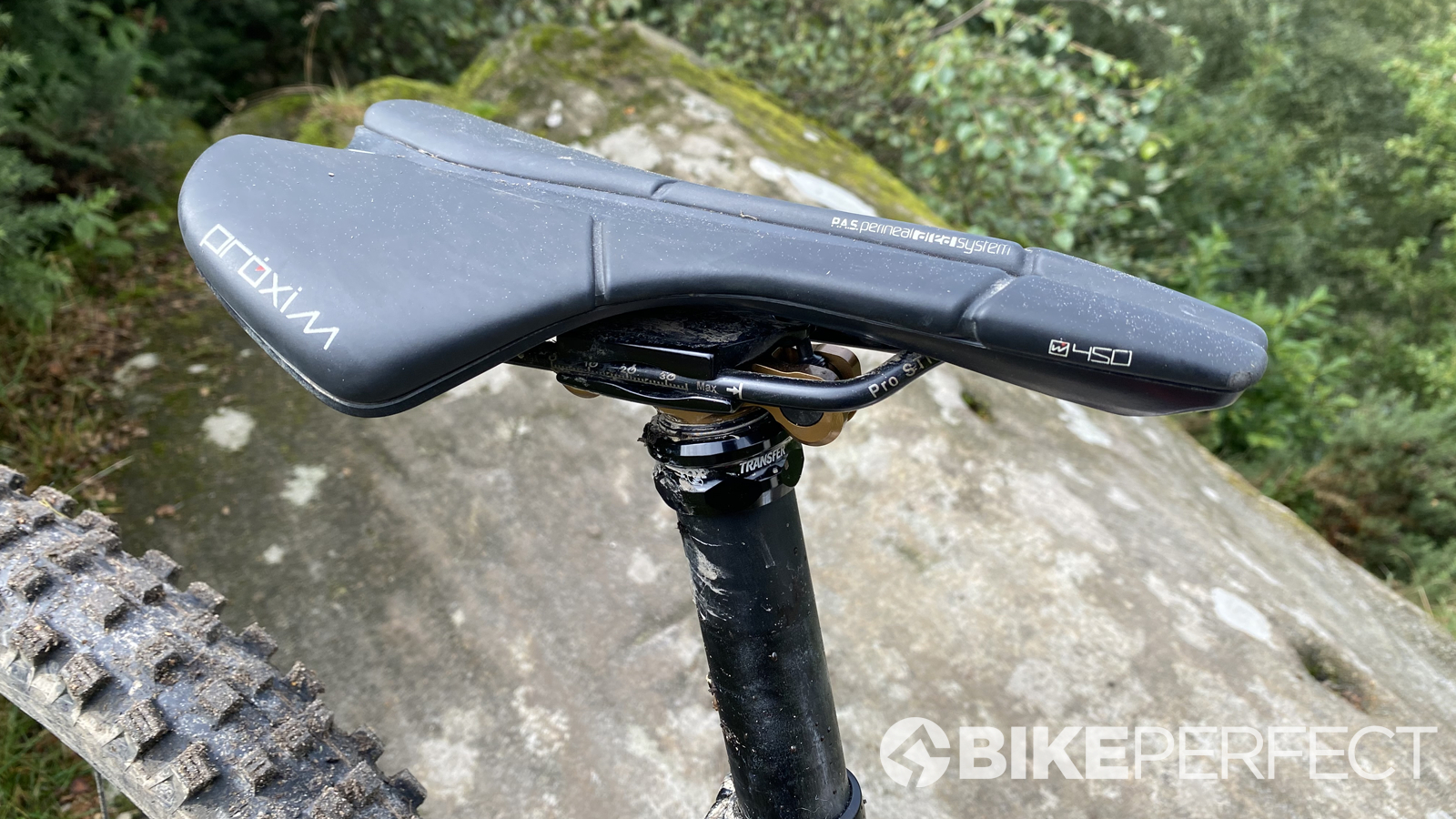
The dominating performance of the rear end means the fork has to be tuned well to not feel comparatively harsh and spikey, but once you’ve found the sweet spot the 38 is as good a partner as you’ll get this side of a dual crown downhill fork. It smooths out the chatter and keeps the tires grounded over ripples and smaller chunder, but still stays settled and predictable even when things get seismic. While they definitely cut into flick-and-flare agility, nearly 2.7kg of reinforced tires means you’re not constantly flinching and waiting for the hiss of a flat when you’re charging through pointy geology like the infamous stage 3 tire-killing fields of the Ard Rock Enduro, where we did some of our testing.
There is a downside to the very stiff, maximum-feedback fork structure, frame, cockpit and tires though, and that’s noticeably accelerated fatigue on rough descents and big days out. The relatively perched, upright geometry means it needs more effort to heave into and then hold a line through each corner as well. This was particularly obvious when we tested it alongside the slacker, lower mixed wheel size Nukeproof Megawatt at Ard Rock and found ourselves braking less and diving into corners harder and more aggressively straight away. As a result, we did some testing on the Sam2 with a 27.5in rear-wheel in both high and low ‘Drifter' chip positions and it immediately felt more agile but also keener to carve low and hard, particularly when we used the high ‘Drifter’ position to relax the head angle and drop the center of gravity.
With a similar tire, the smaller rear wheel does add more drag though and combined with the sheer weight of the bike means it forces Bosch's best e-MTB motor to eat through battery capacity quickly. It's seriously hard work to hustle beyond the speed limiter too and even the continual rattle of the battery in the open underside frame makes the bike feel psychosomatically less settled and smooth than it actually is. The loose axle chip soon becomes tiresome when you’re removing/replacing the wheel as well and while you can unclip the split stem spacers to change bar height you’ll need to completely unplug cable and brake lines if you need to replace the headset bearing.
Verdict
If you’re looking for a seriously stiff, precise and bombproof gravity e-MTB for charging through chaos unscathed the Sam2 6.9 is a proper gravity plow. The Bosch motor, large-capacity battery, bottle compatibility and ample mud space all give it a healthy theoretical appetite for longer sessions and adventures, too. Its weight, geometry, weight distribution and the unforgiving stiffness of several key elements mean you are going to reap what that plow sows in terms of accelerated fatigue, however, so it’s probably you, not the bike, that’ll hit your limits first. Considering the ‘designed for down’ marketing pitch and shock choice, we’re surprised that the motor is left totally exposed and we’re not sure how long the rims will last either.
While we like the look of internal stem routing, it has long-term complications and the ‘Drifter’ flip-chip makes wheel changing a faff. Finally having tested it in mullet format we’d rather it came set up in that more aggressive and agile format as standard, rather than it needing a wheel swap to liberate its playful potential.
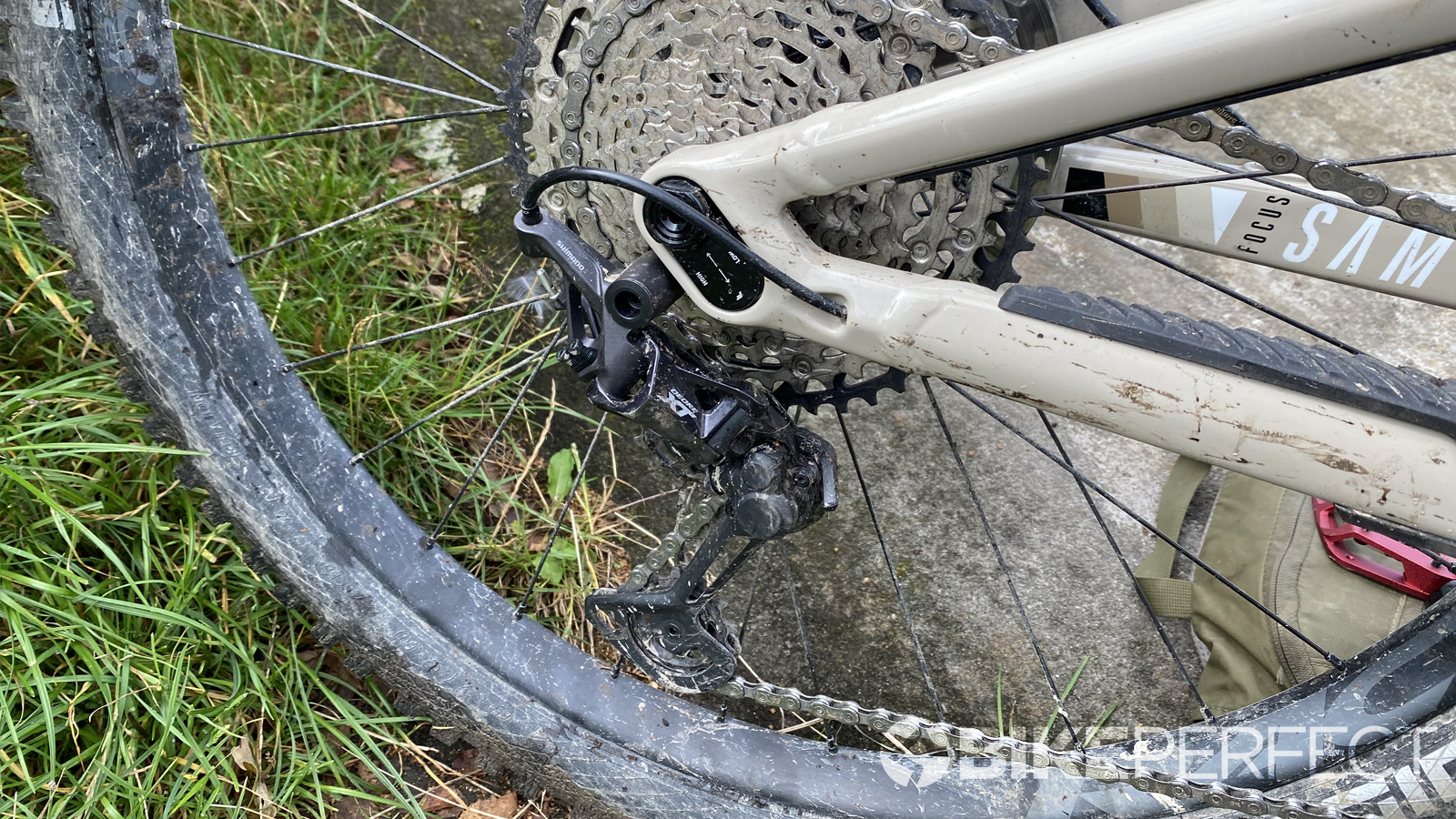
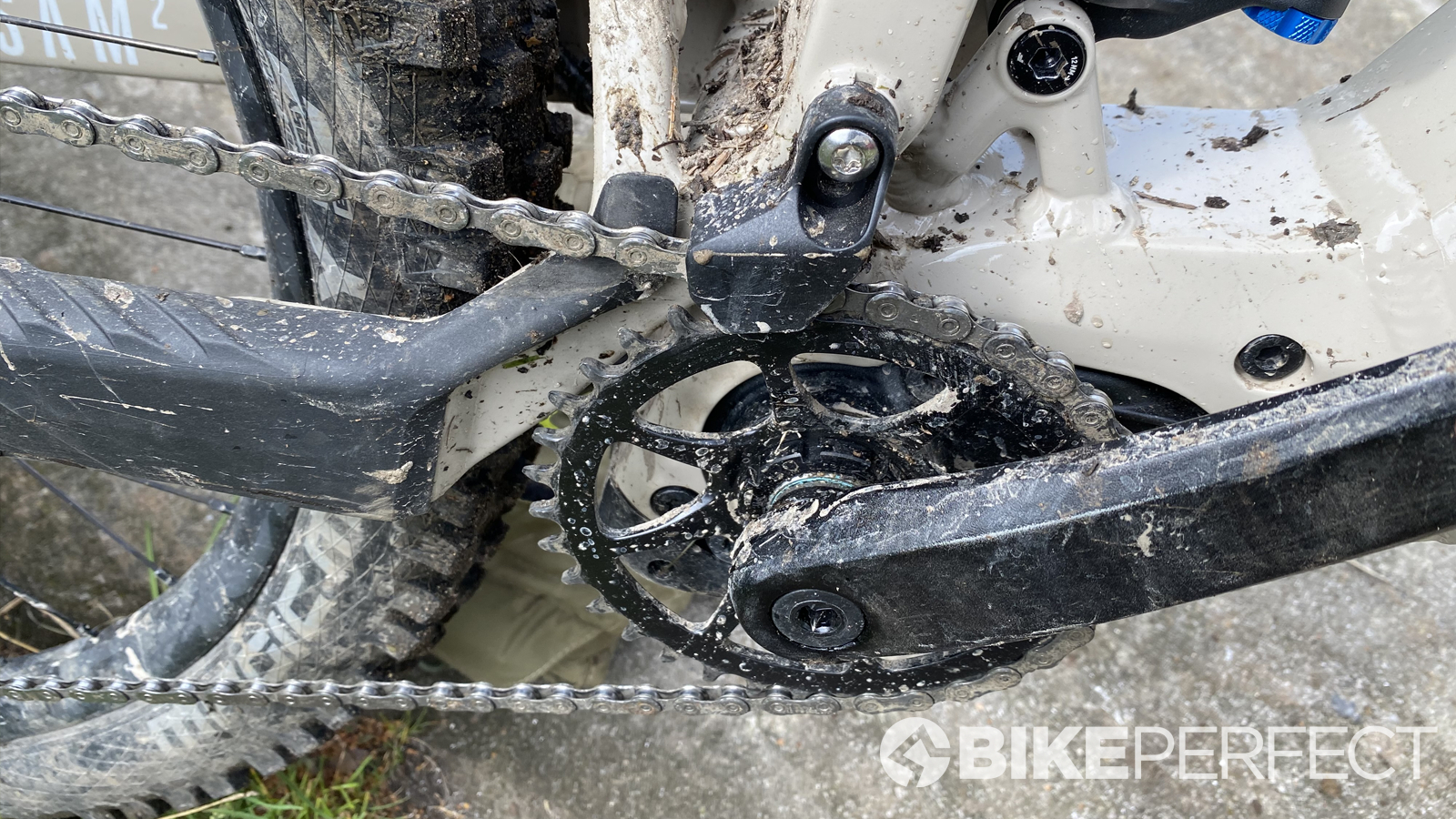
Tech Specs: Focus Sam2 6.9 Enduro electric mountain bike
- Price: $6,199 / £6,199
- Head angle: 65-degrees
- Seat angle: 76-degrees
- Frame material: 7005 Hydroformed alloy
- Size: Medium
- Weight: 26.4kg
- Wheel size: 29x2.6in
- Suspension (front/rear): Fox 38 FIT2 Factory 170mm travel, 44mm offset/Fox Van Performance Coil 170mm travel
- Motor: Bosch Performance CX Gen 4 with lockable 625Wh battery
- Drivetrain: Shimano XT 12 speed rear mech and shifter, Shimano SLX 10-51T cassette and chain
- Cranks: Samox EC40, 34T chainset
- Brakes: Shimano XT brakes with 203mm rotors
- Cockpit: Race Face Chester 780mm bar and Focus CIS 50mm stem
- Wheelset: Race Face AR30 rims with Novatec hubs
- Tires: Schwalbe Magic Mary 29 x 2.6in Super Trail Soft front and Super Gravity Soft rear tires
- Seatpost: Fox Transfer Factory dropper post with KS lever
- Saddle: Proxim W350 saddle

Guy Kesteven has been working on Bike Perfect since its launch in 2019. He started writing and testing for bike mags in 1996. Since then he’s written several million words about several thousand test bikes and a ridiculous amount of riding gear. He’s also penned a handful of bike-related books and he reviews MTBs over on YouTube.
Current rides: Cervelo ZFS-5, Specialized Chisel, custom Nicolai enduro tandem, Landescape/Swallow custom gravel tandem
Height: 180cm
Weight: 69kg
